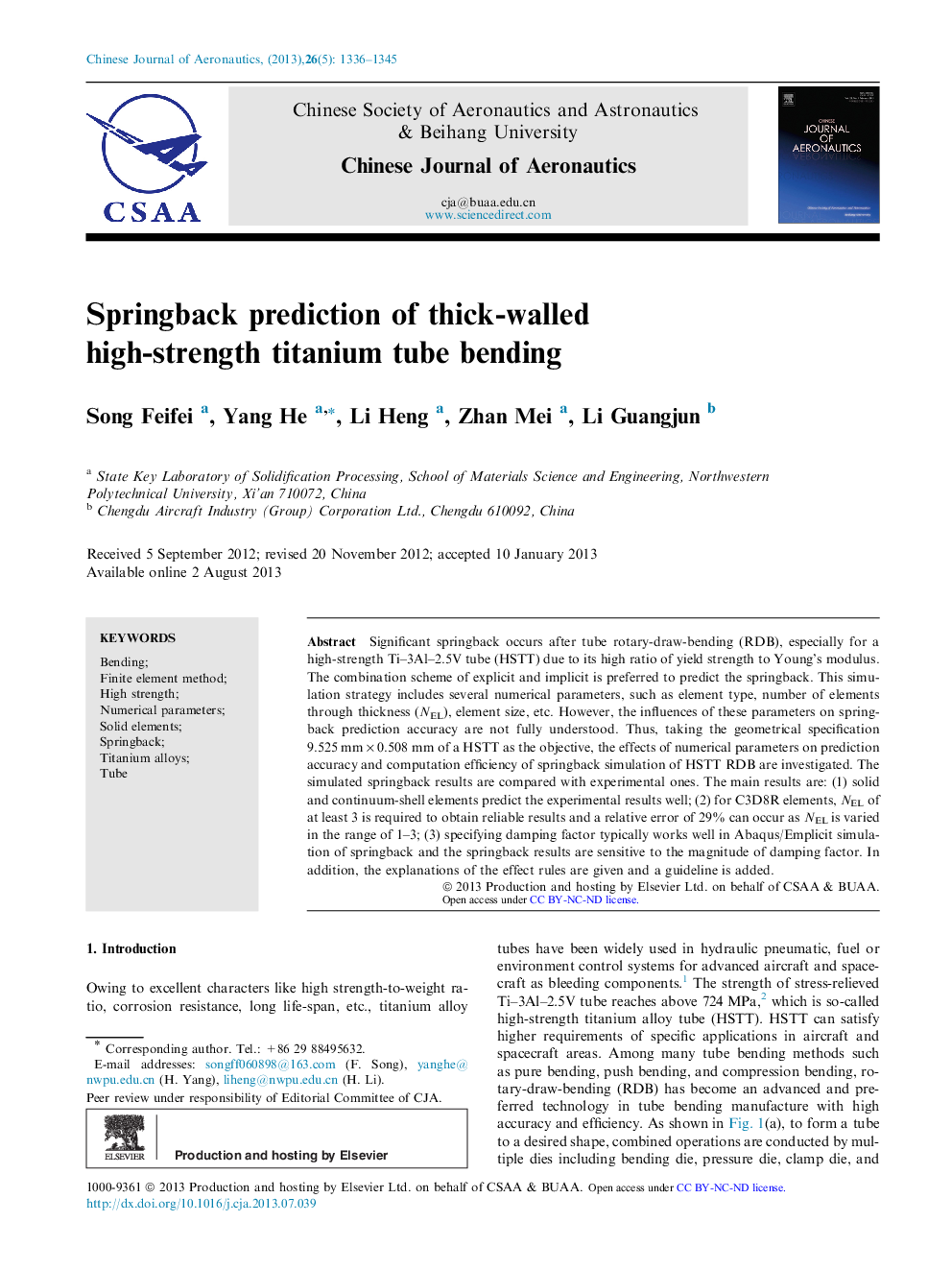| Article ID | Journal | Published Year | Pages | File Type |
|---|---|---|---|---|
| 757792 | Chinese Journal of Aeronautics | 2013 | 10 Pages |
Significant springback occurs after tube rotary-draw-bending (RDB), especially for a high-strength Ti–3Al–2.5V tube (HSTT) due to its high ratio of yield strength to Young’s modulus. The combination scheme of explicit and implicit is preferred to predict the springback. This simulation strategy includes several numerical parameters, such as element type, number of elements through thickness (NEL), element size, etc. However, the influences of these parameters on springback prediction accuracy are not fully understood. Thus, taking the geometrical specification 9.525 mm × 0.508 mm of a HSTT as the objective, the effects of numerical parameters on prediction accuracy and computation efficiency of springback simulation of HSTT RDB are investigated. The simulated springback results are compared with experimental ones. The main results are: (1) solid and continuum-shell elements predict the experimental results well; (2) for C3D8R elements, NEL of at least 3 is required to obtain reliable results and a relative error of 29% can occur as NEL is varied in the range of 1–3; (3) specifying damping factor typically works well in Abaqus/Emplicit simulation of springback and the springback results are sensitive to the magnitude of damping factor. In addition, the explanations of the effect rules are given and a guideline is added.
